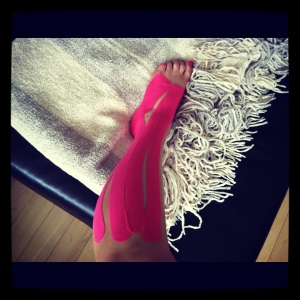Waterproof iPod Shuffle
First, I want to say thanks to my fellow commenters and readers. Your kind words from yesterday made my Wednesday fabulous. ¡Gracias!
Now something instructive for your evening…
I’m officially on my 5th iPod shuffle. That’s right – 5th! The humid summers here in NC and the massive amount of sweat during a 20 miler, I have determined, are not helpful for the life of the shuffle. But I will also add that, if you wash your iPod in the washer and realize it before you put it in the dryer, it will still work. I did that about 3 months ago and only recently, after a super sweaty workout, did it die.
Anyway, my Twitter friend PCinSTL suggested to me the Underwater iPod Shuffle. You can swim with it, run with it, and take it 200 feet deep in the ocean if you want. It is guaranteed to still work. It comes with special headphones for the water (or you can use regular headphones for running) and it functions just like a 2GB iPod. Yes, it’s a little pricer but 5 shuffles are still more expensive than one Waterproof iPod. You can read more about it here. Altogether, if you buy the shuffle and the headphones from the website, you are looking at $175. Or you can buy just the shuffle from Amazon and spend $165 (but you will still need the waterproof headphones for swimming.) And just so you know, out of 103 reviews from Amazon 89 are 5 star review and 9 are four star reviews. I think people really like it.
I’m hoping the cooler months will prolong the life of my newest shuffle 🙂
Happy Trails and Happy Running,
Tracie
On a side note, Monday evening I am meeting with a running coach who happens to be the husband of a friend of mine. He is a 2:25 marathoner and I think I’ve finally come to realize that I can’t do this training thing all on my own. If it’s just me and my training schedule, I’m going to push myself too hard every single time. It’s a given. I’m seeking help…














